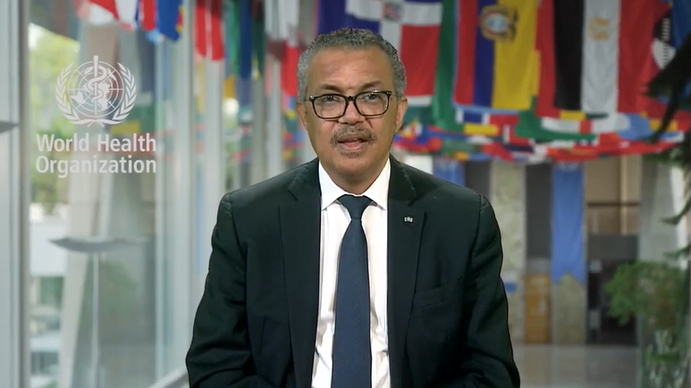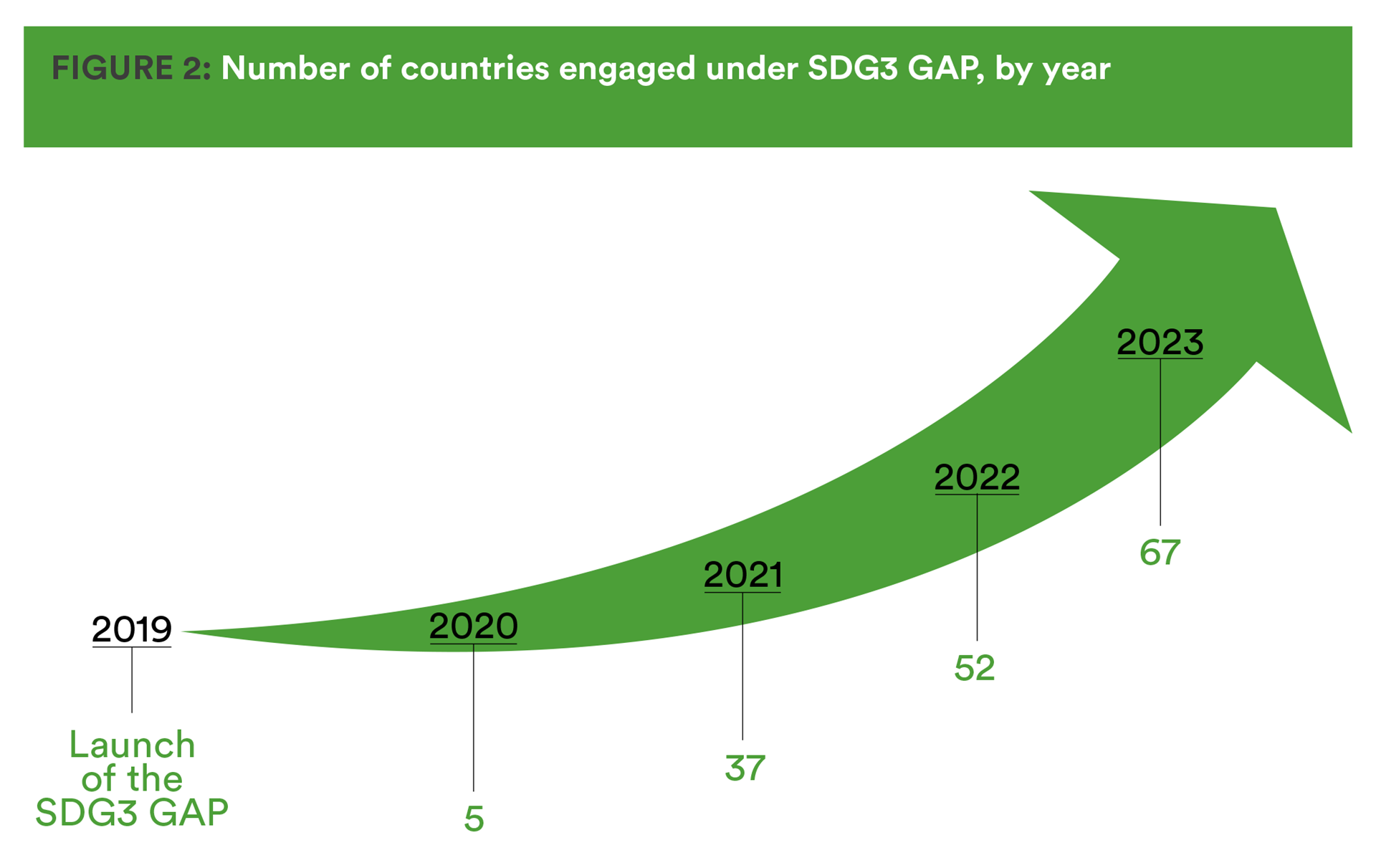
2023 Progress report on the Global Action Plan for Healthy Lives and Well-being for All
What worked? What didn’t? What’s next?
Banner of the 2023 progress report page


"We have made important progress, but we still have a long path to travel to improve the way that multilateral organizations work together to support countries. We must listen to what countries tell us and act upon their guidance. I thank the partners for their collaboration and for the honest self-assessments contained in this report."
- Dr Tedros Adhanom Ghebreyesus, Director-General, WHO
2023 progress report on the Global Action Plan for...
The 2023 progress report on the Global Action Plan for Healthy Lives and Well-being for All (SDG3 GAP) provides a candid reflection on what has worked and what has not worked since the SDG3 GAP was launched in 2019.
The report is published in the context of lagging progress on the health-related SDGs due to overlapping health crises, including the COVID-19 pandemic, war, food insecurity and climate change, as well as economic conditions that are placing significant pressure on domestic and external financing for development.
Stronger collaboration in the multilateral system is therefore more important than ever to help accelerate progress on the SDGs and make the most efficient and effective use of available resources. The report will help to inform thinking ahead of the next United Nations General Assembly SDG Summit and the High-level Meeting on Universal Health Coverage in September 2023.
WHAT WORKED?
The report emphasizes that SDG3 GAP has created an improvement cycle for collaboration on health in the multilateral system and is providing supportive structures for collaboration on health among 13 signatory agencies working in and beyond the health sector.

Figure 1: SDG3 GAP improvement cycle on health in the multilateral system: Country Voice, Joint Action, Case Studies
The report highlights that country engagement under SDG3 GAP has increased and has been most successful where the government shows strong leadership, convenes partners well and has clear vision and goals, and where agencies have resources and flexibility to strengthen collaboration and take joint actions, as illustrated in the SDG3 GAP country case studies published since 2020.

Figure 2: Number of countries engaged under SDG3 GAP, by year

Figure 3: Overview of SDG3 GAP country-level implementation by year of engagement
WHAT DIDN’T WORK?
While there has now been some level of engagement on one or more of the SDG3 GAP accelerator themes in 67 countries, the depth of engagement varies considerably, and the commitments made by the signatory agencies at the global level have not yet fully translated to closer collaboration in all the countries engaged.
Initial engagement of civil society at the SDG3 GAP’s inception, including through the civil society and community engagement accelerator, has not been sustained.
Finally, like the International Health Partnership (IHP+), SDG3 GAP illustrates that “self-commitments” by agency principals at the global level may improve collaboration but can only achieve so much in the absence of external incentives that reinforce collaboration, especially at the country level.
WHAT’S NEXT?
Based on lessons learned, the report makes six recommendations to further strengthen collaboration on health in the multilateral system and help countries to accelerate progress on the health-related SDG targets:
- Further strengthen the SDG3 GAP improvement cycle for health in the multilateral system;
- Maintain SDG3 GAP as a platform for collaboration;
- Better focus work under SDG3 GAP at the country level and foster greater cross-accelerator collaboration in countries on primary health care, sustainable financing, equity, determinants of health, innovation and data, and exploring new thematic issues such as zero dose communities and climate resilient health systems
- Jointly apply new approaches at country level such as delivery for impact;
- Re-engage civil society; and
- strengthen incentives for collaboration through stronger political leadership, governance direction and funding for collaboration.
In the run-up to the 2023 SDG Summit and the other high-level meetings of the United Nations General Assembly in September 2023, SDG3 GAP agencies will:
- review their commitments to stronger collaboration up to 2030;
- continue work on the SDG3 GAP multilateral improvement cycle;
- continue the technical work needed to identify mechanisms to more effectively and efficiently translate their collaboration into action at the country level;
- work with Member States and civil society to identify the best model for sustained political leadership, governance direction and funding for collaboration; and
- continue to work with other related initiatives, such as the GFF Alignment Working Group and the Future of Global Health Initiatives, to improve collaboration.
